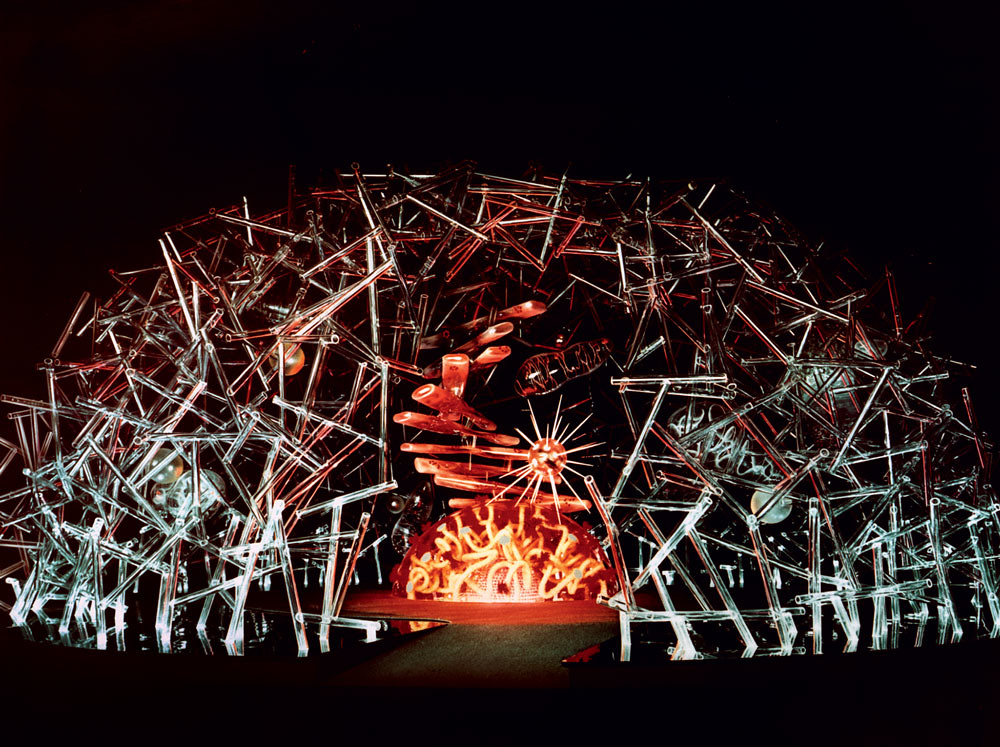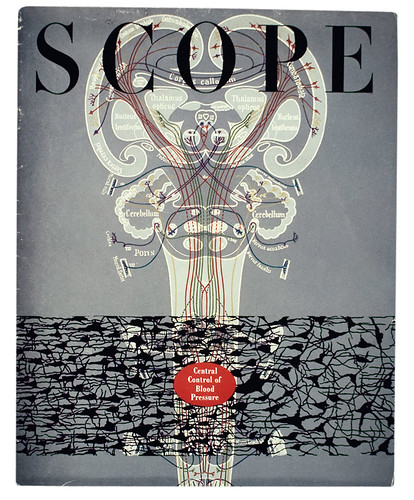 |
| Marvin Mangus |
Art. Comics. Icons from the Age of Anxiety. Jazz. Psychology. Crime Fiction. Finance. Blues. Science. Surf. Satire. OCD.
Friday, March 25, 2016
Monday, March 7, 2016
Will Burtin: The Man Who Invented Infodesign, 1940s, from Eye 82
Will Burtin, the man who invented infodesign, 1940s – from Eye 82

Born in 1908 in a working-class district of Cologne, nothing about Will Burtin’s childhood suggested that the boy would one day pioneer several fields of graphic design, writes Robert Fripp in Eye 82.As a reluctant altar boy, he spent many early mornings at St Gereon’s Basilica. However, this unhappy experience did confer one lifelong benefit: the basilica’s painted images showed Burtin how design and form effectively conveyed information. At fourteen, he began studying typography in night school while working days for his first employer and mentor, Dr. Philippe Knöll. In 1926, Dr. Knöll’s typography shop was working overtime to produce text and illustrations for exhibitors at the upcoming international exposition, Düsseldorf’s GeSoLei.
By 1930, Burtin was an independent designer. Business grew with his reputation. His work came to the attention of Joseph Goebbels, the head of the Nazi propaganda ministry. In 1937, after Burtin rebuffed Goebbels’s invitation to head the ministry’s design section, Hitler summoned him to an interview in person. Burtin, and his Jewish wife, Hilde, fled Germany.
Sponsored by Hilde’s first cousin, wind tunnel designer Max Munk, the pair fled to the US, where, within months, he won a major contract from the US Government to create the Federal Works Agency’s exhibition at the 1939 New York World’s Fair. Soon after that he was illustrating and designing for Time and Life magazines and The Architectural Forum.
Drafted in wartime to the Office of Strategic Services, Burtin headed a design team charged with a priority project: designing manuals for aerial gunners in bomber crews. Burtin’s clear design cut gunners’ training from six months to six weeks.
The late 1940s marked the apogee for using graphic design in magazines to illustrate technical, scientific and medical practices. The postwar world was new: it had discovered rockets, missiles, atomic bombs, antibiotics, jet engines, insecticide, television and the first computers. As the art director at Fortune magazine (1945-49), Will Burtin illustrated these emerging technologies for the sophisticated business leaders and readers building a new society on postwar innovation.
Simultaneously, Burtin took over as art director of Scope magazine (above), the Upjohn Company’s direct mailer to doctors. Reasoning that doctors use their hands to diagnose patients, Burtin responded by combining several different paper stocks in each tactile edition.
Burtin’s large physical models of biomedical processes for Upjohn – the Cell, the Brain, Metabolism, Genes in Action and Defense of Life – stand out. Often, Burtin’s work put into understandable form what scientists had previously been unable to visualize. His models attracted widespread attention and were featured in international publications and television specials.
Thus, the man with little formal schooling would be instructed in science by the likes of Albert Einstein (prior to illustrating one of the first printed articles on nuclear power), top neurologist Wilder Penfield, and futurist Buckminster Fuller. He translated their information in turn into visually comprehensible images.
Will Burtin: Design and Science
Will Burtin (1908-1972) was one of the foremost information designers of the twentieth century. After emigrating to the United States from Germany, Burtin became art director for Fortune magazine. Burtin established his own design firm in New York in 1949, with clients including Union Carbide, Eastman Kodak, the Smithsonian Institution, and Upjohn Pharmaceuticals. Through the design of Scope, the Upjohn firm's journal for physicians, as well as his award-winning exhibitions, Burtin made important advances in making scientific knowledge more accessible. The Will Burtin Archive is currently the largest collection in the GDA and was donated by Carol Burtin Fripp in 2000. In July 2005, the Getty Foundation awarded RIT a grant to process and organize the collection.
Saturday, March 5, 2016
Pablo Picasso Linocut Prints: Always an Inspiration to Me
Subscribe to:
Posts (Atom)



















